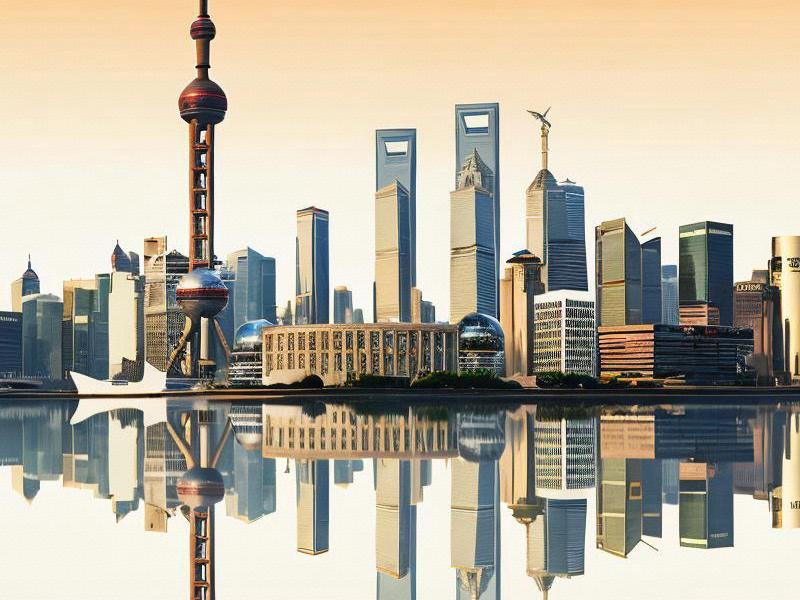Shanghai Chronicles: A Journey Through the Heart of China's Global Metropolis
⏱ 2025-05-01 07:04 🔖 上海龙凤419
📢0℃

Shanghai, a city that has witnessed the ebb and flow of history, is today a vibrant metropolis that serves as a bridge between the East and the West. Its skyline, a blend of historic architecture and cutting-edge skyscrapers, tells a story of a city that has embraced change while preserving its essence. This article embarks on a journey through the heart of Shanghai, chronicling its transformation and the factors that have contributed to its status as a global city.
The urban development of Shanghai is nothing short of remarkable. Over the past few decades, the city has undergone a dramatic transformation, emerging as a symbol of China's economic prowess. The Bund, once a symbol of colonial Shanghai, now stands in stark contrast to the futuristic skyline of Pudong across the Huangpu River. Pudong, which was once farmland, has been transformed into a financial hub, home to some of the world's tallest buildings, including the iconic Oriental Pearl Tower and the Shanghai Tower.
The Lujiazui Financial District is the epicenter of Shanghai's economic activity, attracting multinational corporations and financial institutions from around the globe. The rapid urbanization of Shanghai has not only boosted the local economy but has also positioned the city as a key player in international trade and finance. The development of the Maglev train, the world's fastest commercial train, connecting Pudong International Airport to the city center, is a testament to Shanghai's commitment to innovation and connectivity.
Cultural heritage is another facet of Shanghai that sets it apart. The city is a melting pot of cultures, with influences from China's various regions as well as from abroad. The French Concession, with its charming cobblestone streets and European-style architecture, offers a glimpse into the city's colonial past. Meanwhile, the Yu Garden, a classical Chinese garden, showcases the traditional aesthetics and craftsmanship of ancient China.
上海私人品茶
Shanghai's cultural scene is thriving, with a vibrant arts and entertainment industry that includes world-class museums, theaters, and music venues. The Shanghai Museum, renowned for its extensive collection of Chinese art, attracts millions of visitors each year. The city's art galleries and contemporary art museums, such as the Power Station of Art, provide a platform for emerging artists and showcase the latest trends in contemporary art.
The economic transformation of Shanghai has been nothing short of extraordinary. Once a small fishing village, Shanghai has grown into China's largest city and a global financial hub. The opening of the Shanghai Stock Exchange in 1990 marked a new era of economic reform and opening up for China. Today, Shanghai is home to the headquarters of numerous multinational corporations and is a major center for trade, finance, and logistics.
The city's strategic location along the Yangtze River and its well-developed infrastructure have made it a key player in China's Belt and Road Initiative. Shanghai's free trade zones, including the China (Shanghai) Pilot Free Trade Zone, have attracted foreign investment and promoted trade facilitation. The city's commitment to innovation and entrepreneurship has led to the growth of high-tech industries and the development of a thriving startup ecosystem.
上海花千坊龙凤
Shanghai's global influence extends beyond its economic achievements. The city has become a cultural and educational hub, attracting students and scholars from around the world. Fudan University and Tongji University are among the top universities in China, offering a wide range of programs in various fields. The city's international schools and language institutions provide education for expatriates and their families, further enhancing Shanghai's appeal as a global city.
The lifestyle in Shanghai is a blend of the traditional and the modern. The city's residents enjoy a high standard of living, with access to world-class healthcare, education, and cultural amenities. The vibrant food scene in Shanghai offers a taste of the city's rich culinary heritage, with everything from traditional Shanghainese cuisine to international flavors. The city's nightlife is equally vibrant, with a wide range of bars, clubs, and entertainment venues catering to diverse tastes.
Sustainability is a growing concern in Shanghai, as the city grapples with the challenges of rapid urbanization. Efforts are being made to promote green development and reduce environmental impact. The city has implemented various initiatives to improve air quality, enhance public transportation, and promote energy efficiency. The construction of green spaces and the preservation of historical sites are also part of Shanghai's commitment to sustainable urban development.
上海龙凤419
The future of Shanghai looks promising, with continued investment in infrastructure, technology, and cultural initiatives. The city is poised to play an even greater role in China's economic development and its integration into the global economy. As Shanghai continues to evolve, it remains a symbol of China's progress and a beacon of opportunity for people from all over the world.
In conclusion, Shanghai's journey from a small fishing village to a global metropolis is a story of resilience, innovation, and transformation. The city's rapid urban development, rich cultural heritage, economic transformation, and increasing global influence make it a fascinating subject of study and admiration. As we look to the future, Shanghai's legacy as a bridge between the East and the West will undoubtedly continue to shape the course of history.
【潮涌长三角:上海的半径与圆周】从外滩灯光到江南水乡的共生密码Shanghai's Vibrant Cultural Scene: A Blend of Tradition and Modernity【霓虹与素笺】上海女性的百年气质图谱Shanghai 5250: Quantum Leisure Singularity and the Galactic Nightlife Matrix【城市观察】文化魔方的三原色:上海剧场、书店与美术馆的共生实验Shanghai's Nightlife Renaissance: Where Imperial Heritage Meets Quantum Innovation【霓虹密码】上海娱乐会所的时空折叠术Shanghai's Smart Nightlife Ecosystems: Blending Imperial Heritage with AI-Driven Innovation【量子上海】在11个维度中同时绽放的魔都镜像(1850-2025)Shanghai's Finest Women: A Story of Resilience and Excellence

